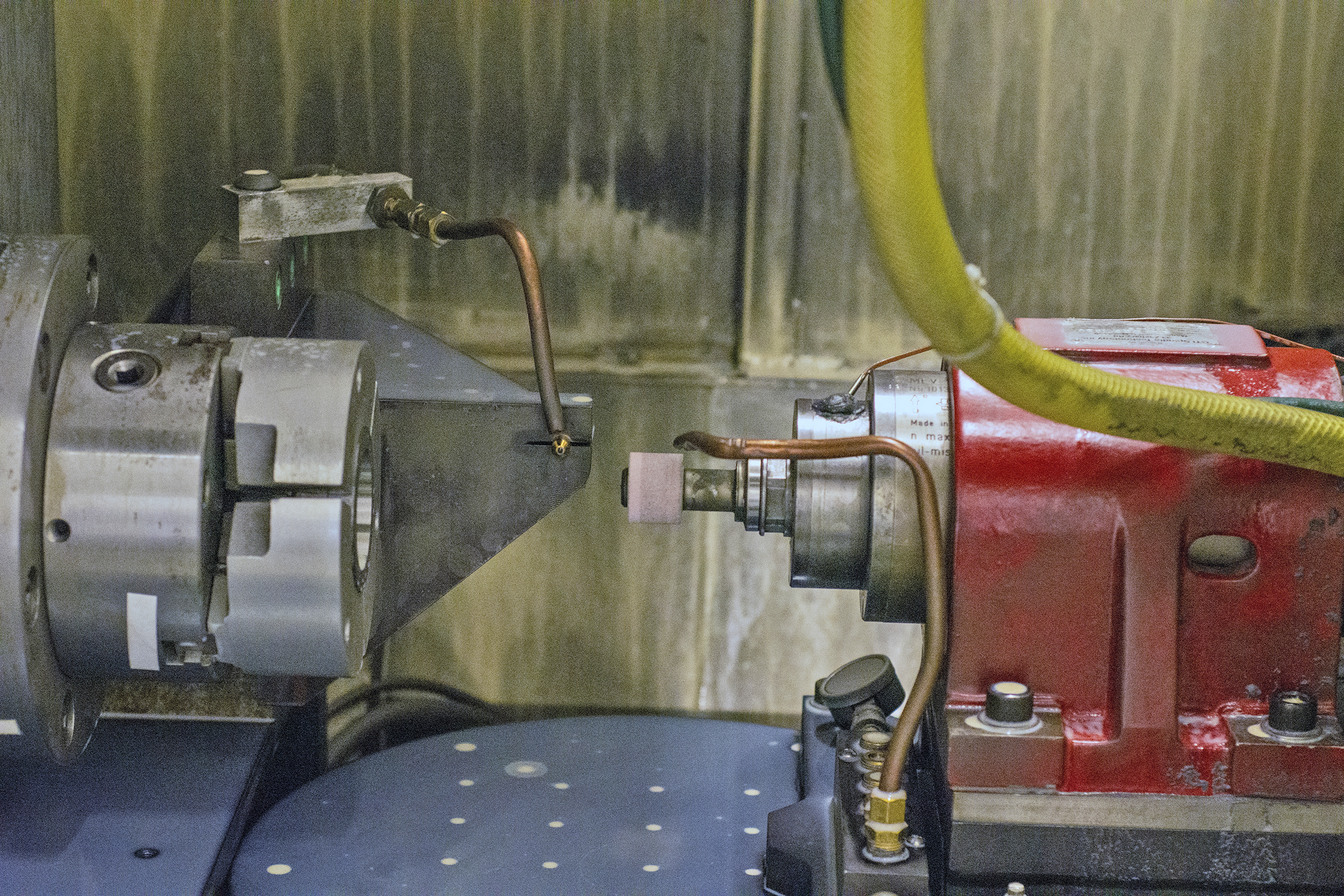
Coventry Associates in Shrewsbury, Mass., has developed a three-axis system for a variety of machining operations. Called the Eccentric Positioning System (EPS), the fully electric system, eliminates pneumatics and hydraulics, reduces setup and cycle time, uses less energy, and has a small footprint, said Craig Gardner, president of Coventry Associates.
EPS is a mechatronic system that consists of a stack of three eccentric rotary tables. By controlling the rotation of each rotary table, the precise position and angle of a tool are achieved. The positioning accuracy and adaptive performance of the EPS system are enabled by the Siemens Sinumerik CNC, as seen in this video.
EPS has been incorporated into an ID grinding machine where it has demonstrated three distinct advantages. It can dress or grind any shape without the use of diamond rolls or special dressing attachments. Secondly, it can grind by adaptively controlling the normal grinding force, rather than the feed rate, which dramatically improves material removal rates. Third, it compensates in real time for deflections that result in workpiece diameter and/or taper variation, improving both quality and throughput.
Gardner said that the EPS “has potential applications in all grinding and turning operations for the machine tool industry.” He added that the EPS will be made suitable for any machining operation that requires a combination of high positioning accuracy and controlled force.
Coventry’s launch product, EPS SingleTool, is designed for bearing ID grinding operations, using a single wheelhead. A shoe or chuck workhead can be used, with a single point or rotary dresser for shaping any contour. Power consumption is 10kW max. and the weight is 630 kg, with exterior dimensions of 305 mm x 660 mm x 560 mm.
Coventry validated the positioning performance of the EPS SingleTool using a laser interferometer to measure its resolution, accuracy, repeatability, and straightness capability.
Because of the unique kinematics of the EPS, all motions are three-axis interpolated moves. The results of these measurements are shown in Table 1. These measurements show state-of-the-art positioning capability with a repeatability of 52 nanometers.
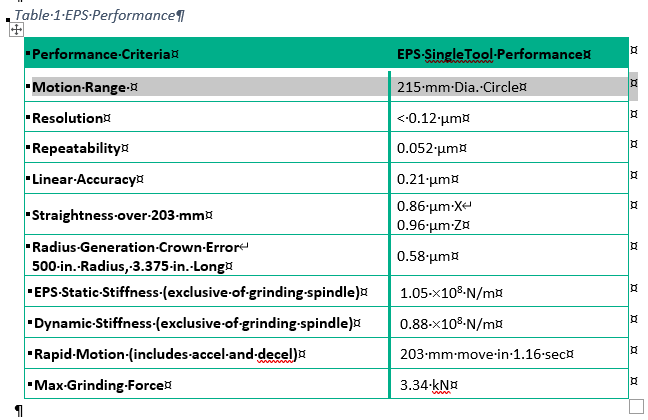
The system also has high static and dynamic stiffness as well as the ability to grind with large forces and make rapid motions to minimize the time required to make non-grinding motions.
The figure below (figure 4) shows the X deviation or “straightness” achieved during 3 back and forth (6 passes total) Z axis moves. This data shows that the difference between the maximum and minimum values for all 6 passes was less than a micron over 200 mm of travel.
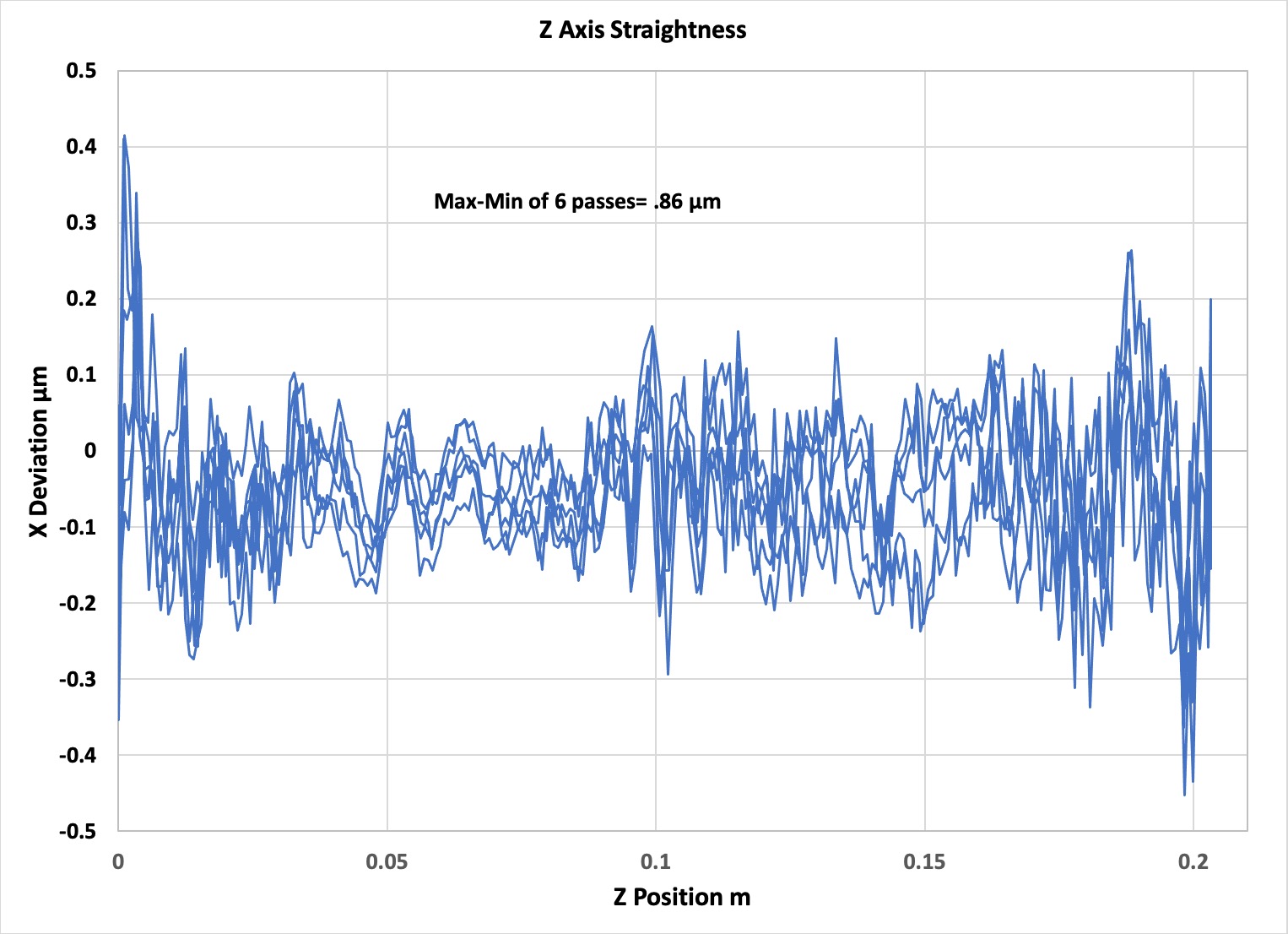
Coventry worked closely with the Fraunhofer USA offices in Boston, Massachusetts, plus two key partners, Saint Gobain Abrasives and Siemens Industry, Inc., to develop the initial SingleTool ID grinding application.
As Gardner explained, “Our business strategy is to bring the EPS to market as a hardware and software solution, either as a complete machine to end users or as a platform for machine builders. Our solution features all-electric operation, using no pneumatics or hydraulics. We typically see resolution less than 0.12 microns with 0.05 microns repeatability, plus linear accuracy to 0.12 microns with consistent static and dynamic stiffness to a maximum grinding force of 3.34 kN. Rapid motion, including acceleration and deceleration, is tracking a 203 mm movement in 1.16 sec.”
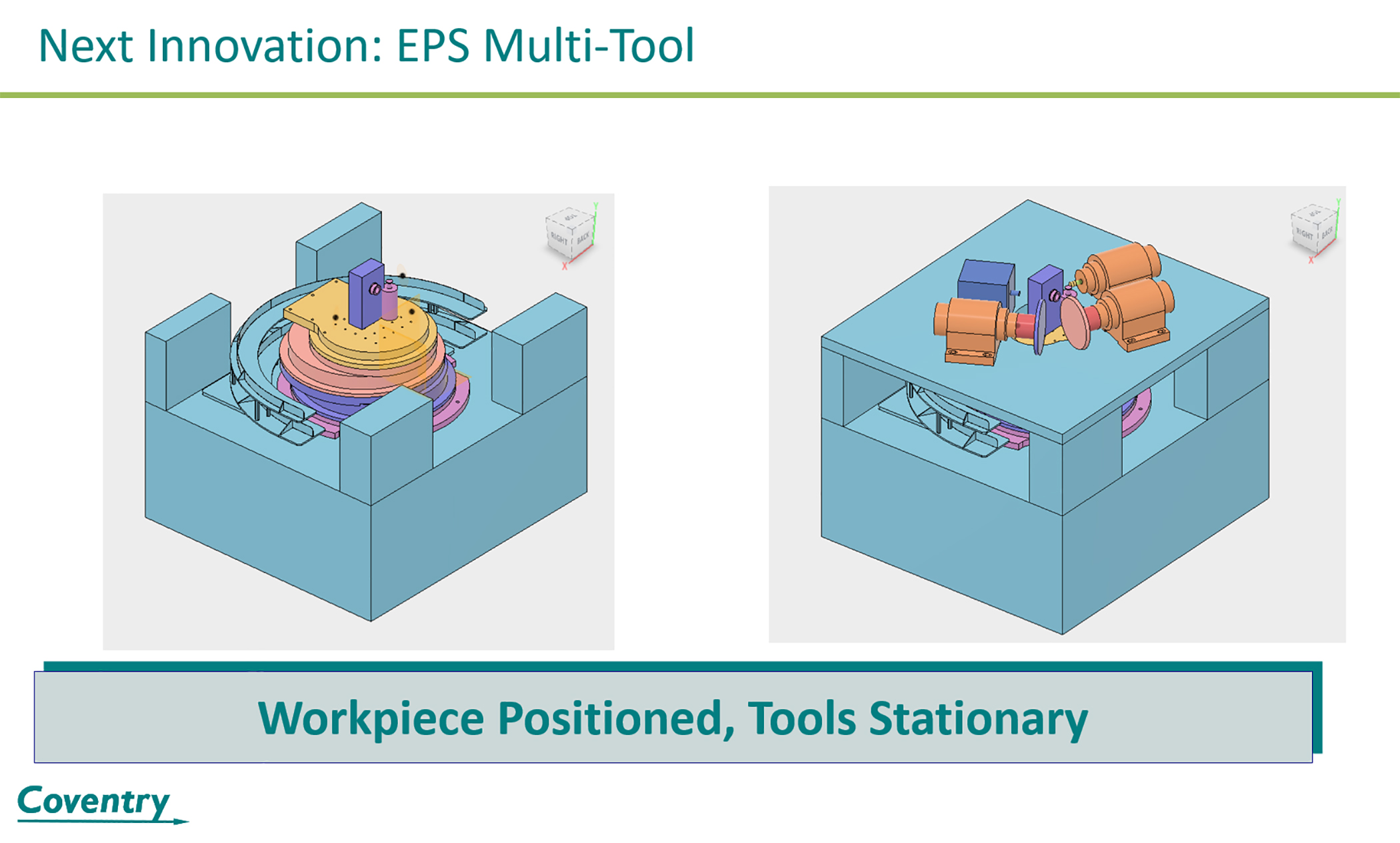
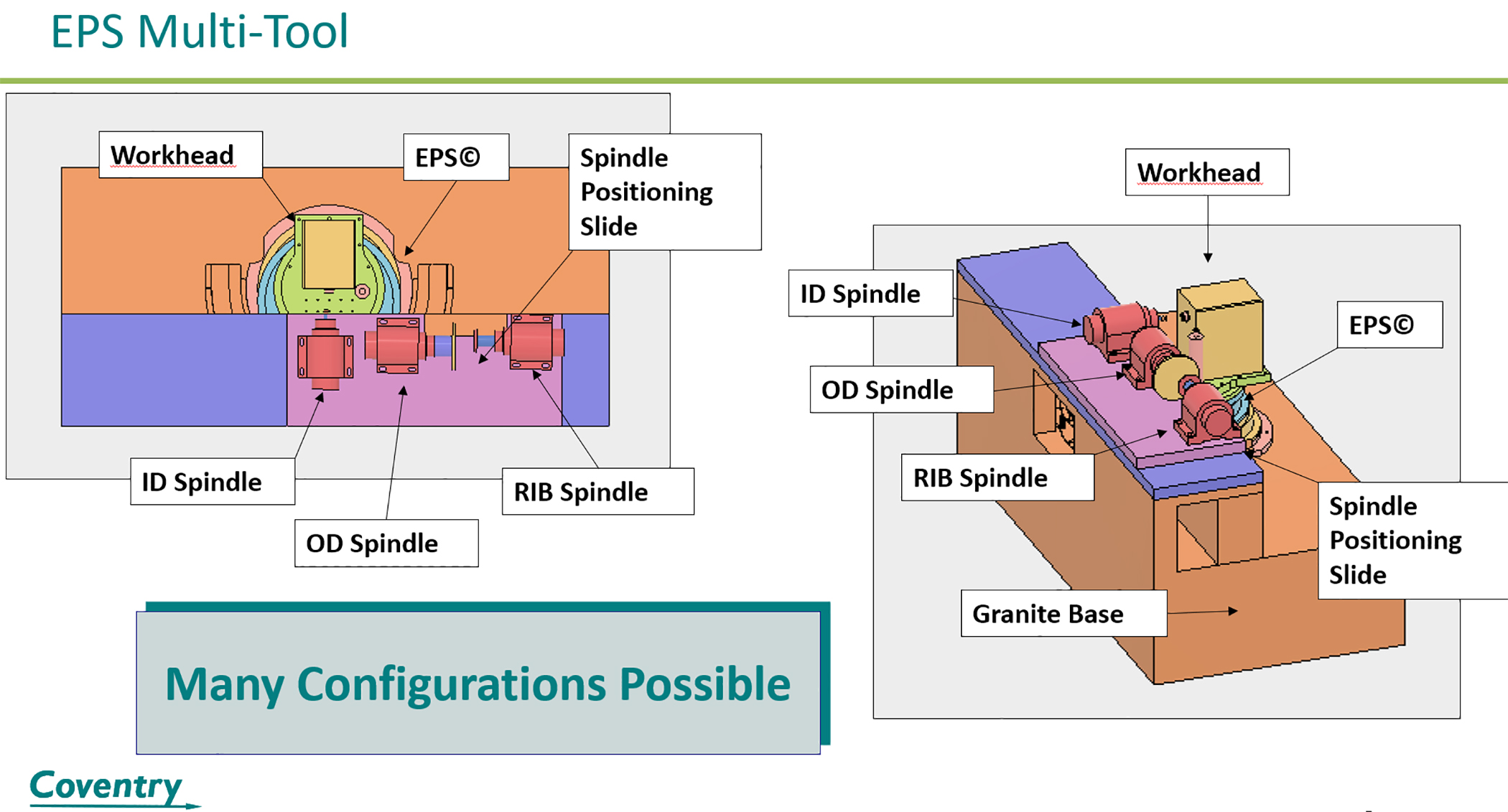
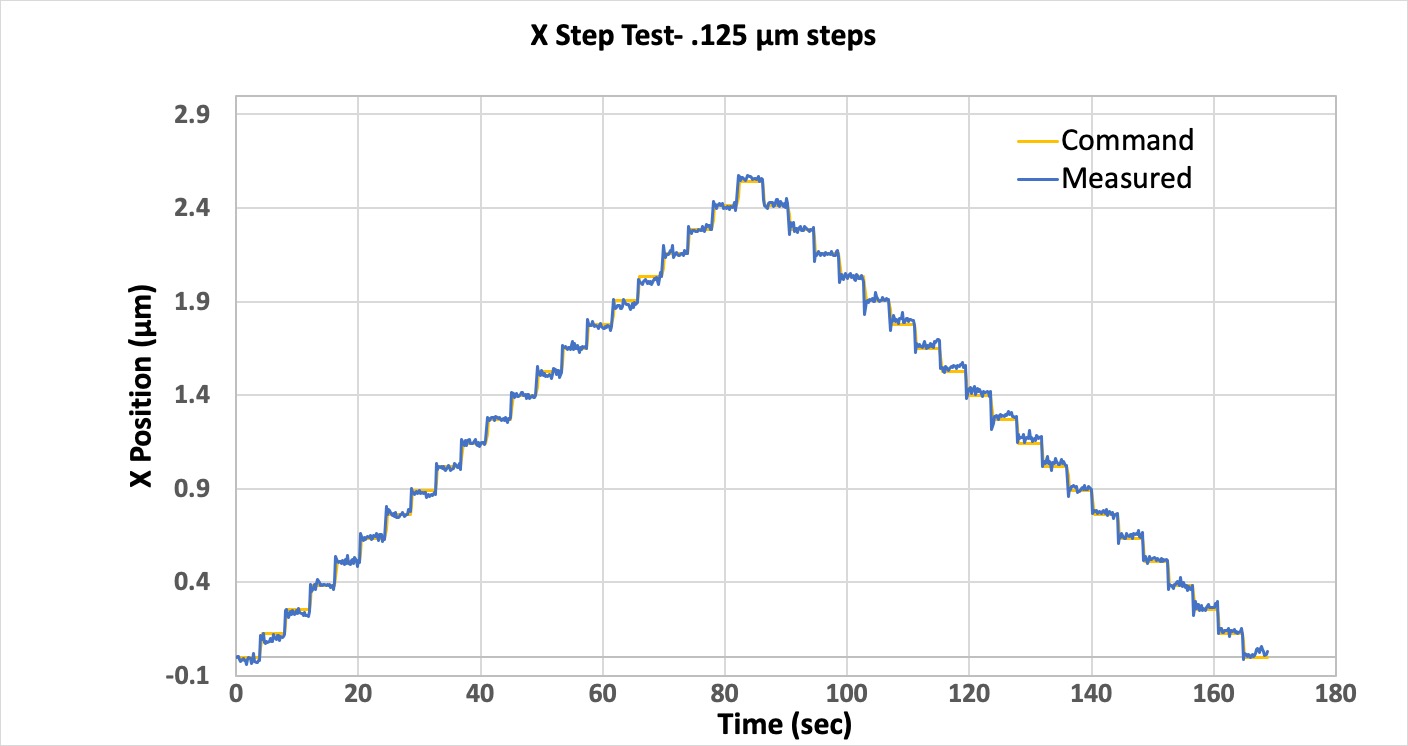
Related Glossary Terms
- chuck
chuck
Workholding device that affixes to a mill, lathe or drill-press spindle. It holds a tool or workpiece by one end, allowing it to be rotated. May also be fitted to the machine table to hold a workpiece. Two or more adjustable jaws actually hold the tool or part. May be actuated manually, pneumatically, hydraulically or electrically. See collet.
- computer numerical control ( CNC)
computer numerical control ( CNC)
Microprocessor-based controller dedicated to a machine tool that permits the creation or modification of parts. Programmed numerical control activates the machine’s servos and spindle drives and controls the various machining operations. See DNC, direct numerical control; NC, numerical control.
- dressing
dressing
Removal of undesirable materials from “loaded” grinding wheels using a single- or multi-point diamond or other tool. The process also exposes unused, sharp abrasive points. See loading; truing.
- dynamic stiffness
dynamic stiffness
Measure of a machining system’s ability to dampen vibration from a forced input. If the dynamic stiffness of a system is not sufficient to dampen vibration, chatter occurs. See static stiffness; stiffness.
- feed
feed
Rate of change of position of the tool as a whole, relative to the workpiece while cutting.
- grinding
grinding
Machining operation in which material is removed from the workpiece by a powered abrasive wheel, stone, belt, paste, sheet, compound, slurry, etc. Takes various forms: surface grinding (creates flat and/or squared surfaces); cylindrical grinding (for external cylindrical and tapered shapes, fillets, undercuts, etc.); centerless grinding; chamfering; thread and form grinding; tool and cutter grinding; offhand grinding; lapping and polishing (grinding with extremely fine grits to create ultrasmooth surfaces); honing; and disc grinding.
- grinding machine
grinding machine
Powers a grinding wheel or other abrasive tool for the purpose of removing metal and finishing workpieces to close tolerances. Provides smooth, square, parallel and accurate workpiece surfaces. When ultrasmooth surfaces and finishes on the order of microns are required, lapping and honing machines (precision grinders that run abrasives with extremely fine, uniform grits) are used. In its “finishing” role, the grinder is perhaps the most widely used machine tool. Various styles are available: bench and pedestal grinders for sharpening lathe bits and drills; surface grinders for producing square, parallel, smooth and accurate parts; cylindrical and centerless grinders; center-hole grinders; form grinders; facemill and endmill grinders; gear-cutting grinders; jig grinders; abrasive belt (backstand, swing-frame, belt-roll) grinders; tool and cutter grinders for sharpening and resharpening cutting tools; carbide grinders; hand-held die grinders; and abrasive cutoff saws.
- inner diameter ( ID)
inner diameter ( ID)
Dimension that defines the inside diameter of a cavity or hole. See OD, outer diameter.
- micron
micron
Measure of length that is equal to one-millionth of a meter.
- shaping
shaping
Using a shaper primarily to produce flat surfaces in horizontal, vertical or angular planes. It can also include the machining of curved surfaces, helixes, serrations and special work involving odd and irregular shapes. Often used for prototype or short-run manufacturing to eliminate the need for expensive special tooling or processes.
- stiffness
stiffness
1. Ability of a material or part to resist elastic deflection. 2. The rate of stress with respect to strain; the greater the stress required to produce a given strain, the stiffer the material is said to be. See dynamic stiffness; static stiffness.
- turning
turning
Workpiece is held in a chuck, mounted on a face plate or secured between centers and rotated while a cutting tool, normally a single-point tool, is fed into it along its periphery or across its end or face. Takes the form of straight turning (cutting along the periphery of the workpiece); taper turning (creating a taper); step turning (turning different-size diameters on the same work); chamfering (beveling an edge or shoulder); facing (cutting on an end); turning threads (usually external but can be internal); roughing (high-volume metal removal); and finishing (final light cuts). Performed on lathes, turning centers, chucking machines, automatic screw machines and similar machines.
